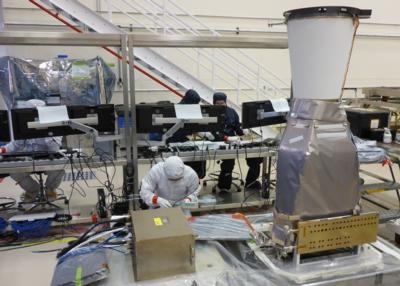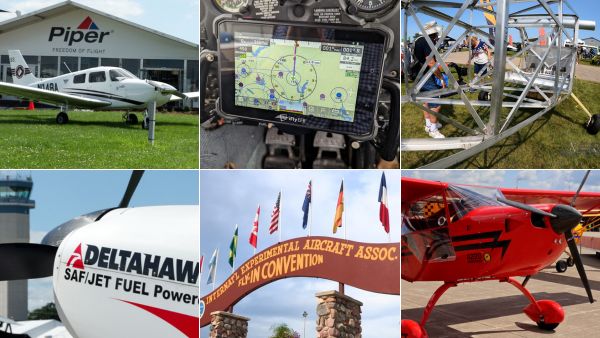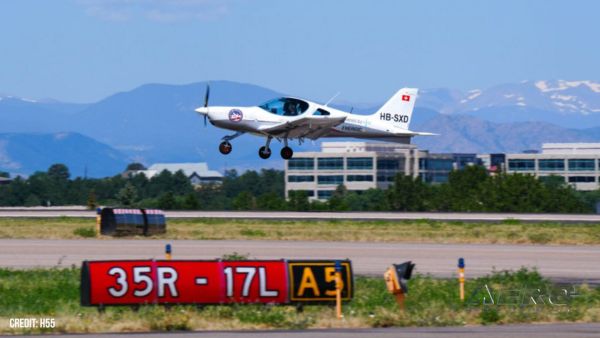Thu, Jan 14, 2016
Most Of The Western Hemisphere To Benefit From Better Severe Weather Warning
The second Geostationary Lightning Mapper (GLM) instrument that will provide earlier alerts of severe storms and contribute to more accurate tornado warnings has been delivered by Lockheed Martin. The sensor will fly on the second next-generation Geostationary Operational Environmental Satellite, known as GOES-S, for the National Oceanic and Atmospheric Administration (NOAA).

The Lockheed Martin team successfully completed assembly, integration, test and delivery of the second GLM instrument only 13 months after the first delivery.
"We reduced the build and test time of this complex instrument by 40 percent compared to the first unit," said Jeff Vanden Beukel, Lockheed Martin GLM program director. "Now that development is complete, we are able to reduce delivery time so the GOES program can serve our nation with more accurate weather information."
A rapid increase of in-cloud lightning can precede severe weather on the ground. GLM tracks that activity and gives faster warning plus more precise location information versus current systems. It does this by tracking lightning flashes from geostationary orbit, with continuous coverage of the United States and most of the Western Hemisphere. The heart of the GLM instrument is a high-speed (500 frames per second), 1.8 megapixel focal plane, integrated with low-noise electronics and specialized optics to detect weak lightning signals, even against bright, sunlit cloud backgrounds. It was developed at Lockheed Martin's Advanced Technology Center in Palo Alto.
GOES satellites are a key element in NOAA's National Weather Service operations, providing a continuous stream of weather imagery and sounding data used to support weather forecasting, severe-storm tracking and meteorological research. The GOES program is managed and operated by NOAA, and NASA's Goddard Space Flight Center manages GLM instrument development. The team is preparing GLM for integration on the GOES-S spacecraft at Lockheed Martin's facility near Denver.
(Image provided with Lockheed Martin news release)
More News
Charted Visual Flight Procedure Approach An approach conducted while operating on an instrument flight rules (IFR) flight plan which authorizes the pilot of an aircraft to proceed >[...]
“When l became the Secretary of Defense, I committed to rebuild our military to match threats to capabilities. Drones are the biggest battlefield innovation in a generation, >[...]
Aero Linx: Stearman Restorers Association Welcome to the Stearman Restorers Association. The Stearman Restorers Association is an independent “Not for Profit” 501C-3 Co>[...]
Airplane Exhibited A Partial Loss Of Engine Power When It Was About Halfway Down The Runway Analysis: The pilot of the experimental amateur-built airplane was departing from his pr>[...]
The Flight Path Was Consistent With Low-Altitude Maneuvering On June 18, 2025, about 0922 mountain standard time, a Cessna A150L airplane, N6436F, was substantially damaged when it>[...]
 ANN's Daily Aero-Term (07.15.25): Charted Visual Flight Procedure Approach
ANN's Daily Aero-Term (07.15.25): Charted Visual Flight Procedure Approach Aero-News: Quote of the Day (07.15.25)
Aero-News: Quote of the Day (07.15.25) ANN's Daily Aero-Linx (07.15.25)
ANN's Daily Aero-Linx (07.15.25) NTSB Final Report: Kjelsrud Gary Kitfox
NTSB Final Report: Kjelsrud Gary Kitfox NTSB Prelim: Cessna A150L
NTSB Prelim: Cessna A150L



